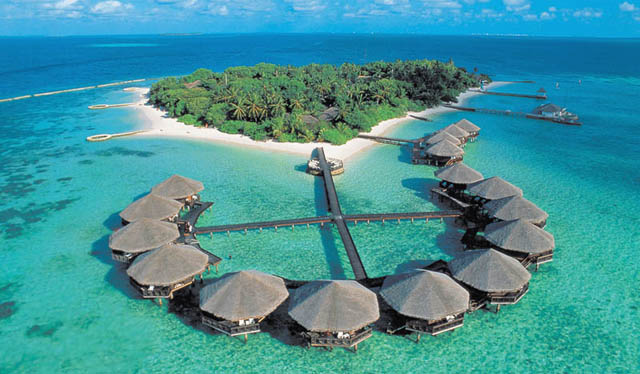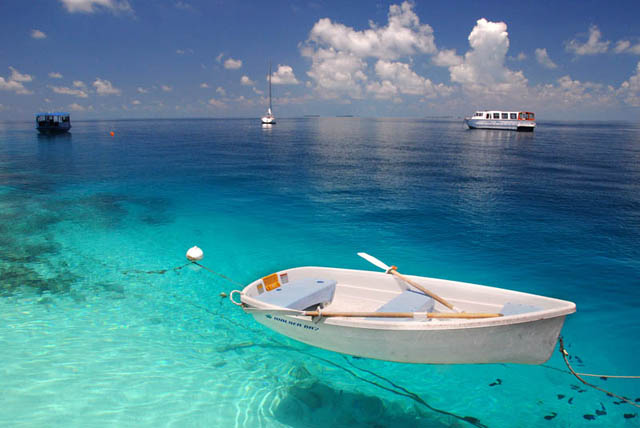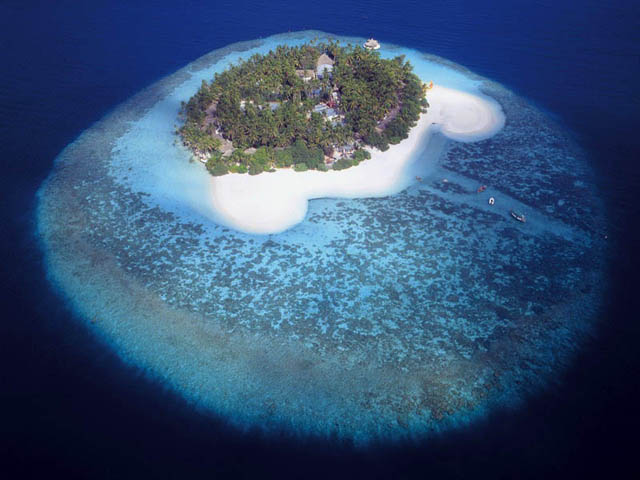
Welcome to the Maldives, where pristine beaches, crystal-clear waters, and vibrant marine life await you. In this comprehensive guide, we’ll delve into everything you need to know to plan your dream vacation in this tropical paradise.
The Maldives, located in the Indian Ocean southwest of Sri Lanka and India, is an archipelago nation comprising 26 atolls spread across approximately 1,200 coral islands. Its history dates back over 2,000 years, with early settlers believed to have been influenced by various cultures from South Asia, Arabia, and Africa.
Today, the Maldives is known worldwide for its stunning natural beauty, with its turquoise waters, white sandy beaches, and thriving coral reefs attracting tourists from around the globe. Despite facing challenges such as climate change and rising sea levels, the Maldives remains a symbol of tropical paradise and is celebrated for its unique culture, warm hospitality, and commitment to sustainable tourism.

Stunning beaches and luxury resorts
1. Pristine Beaches:
- Picture-perfect white sandy beaches stretch as far as the eye can see, fringed by swaying palm trees and lapped by the crystal-clear waters of the Indian Ocean.
- The beaches in the Maldives are renowned for their tranquility and seclusion, providing the perfect setting for relaxation, sunbathing, and romantic walks along the shore.
- Popular beach destinations include the beaches of the North Male Atoll, South Male Atoll, and Ari Atoll, each offering its own unique charm and beauty.
2. Luxury Resorts:
- The Maldives boasts some of the most luxurious resorts in the world, with overwater villas and bungalows that offer unparalleled privacy and stunning ocean views.
- These resorts are equipped with world-class amenities, including private infinity pools, spa facilities, gourmet restaurants, and personalized butler service.
- Many resorts in the Maldives also offer a range of water sports and recreational activities, from snorkeling and diving to sunset cruises and dolphin watching.
- Some of the top luxury resort brands in the Maldives include COMO, Four Seasons, St. Regis, and Soneva, each offering a unique blend of luxury and sustainability.

3. Overwater Villas:
- Overwater villas are a signature feature of many luxury resorts in the Maldives, allowing guests to experience the ultimate in luxury and seclusion.
- These spacious villas are built on stilts over the lagoon, providing direct access to the water and uninterrupted views of the ocean and surrounding islands.
- Overwater villas typically feature private sun decks, glass-bottom floors, outdoor showers, and luxurious amenities, creating an unforgettable tropical retreat.
4. Private Island Resorts:
- For those seeking the ultimate in exclusivity and privacy, the Maldives offers a range of private island resorts where guests can escape the crowds and enjoy their own piece of paradise.
- These private island resorts often cater to a limited number of guests, ensuring a serene and intimate atmosphere.
- Private island resorts may offer personalized dining experiences, secluded beaches, and bespoke excursions tailored to the interests of each guest.

Whether you’re looking for a romantic getaway, a family vacation, or a luxury escape, the stunning beaches and luxury resorts of the Maldives promise an unforgettable experience that will leave you feeling rejuvenated and inspired.
Best time to visit the Maldives
1. Dry Season (November to April):
- This period, especially from December to April, is considered the peak tourist season in the Maldives due to its dry and sunny weather.
- You can expect clear skies, calm seas, and minimal rainfall during these months, making it ideal for outdoor activities such as snorkeling, diving, and beach relaxation.
- December to March is particularly popular for honeymooners and luxury travelers, so expect higher prices and more crowds at resorts during this time.
2. Wet Season (May to October):
- The wet season in the Maldives typically runs from May to October, characterized by higher humidity, occasional rainfall, and stronger winds.
- While there may be brief rain showers and overcast skies, the weather is generally still warm and pleasant for most of the day.
- This period also sees an increase in marine life activity, making it a great time for diving and snorkeling enthusiasts, as underwater visibility can be excellent.
- Due to fewer tourists, you may find better deals on accommodations and activities during the wet season, making it an attractive option for budget-conscious travelers.

3. Shoulder Seasons:
- The transition months of November and April, between the dry and wet seasons, can offer a balance between good weather and fewer crowds.
- These shoulder seasons may provide a sweet spot for travelers looking to avoid peak tourist numbers while still enjoying relatively dry and sunny conditions.
Ultimately, the best time to visit the Maldives depends on your priorities and preferences. If you prioritize sunny weather and are willing to pay higher prices for accommodations and activities, the dry season is your best bet. However, if you prefer fewer crowds and don’t mind occasional rain showers, the shoulder seasons or wet season may offer a more budget-friendly and authentic experience.
Whether you’re seeking a romantic getaway, a family adventure, or simply a serene escape from the hustle and bustle of everyday life, the Maldives offers a paradise like no other. Start planning your unforgettable journey today!
Health and safety tips
1. Stay Hydrated:
- The Maldives has a tropical climate with high temperatures and humidity. Be sure to drink plenty of water to stay hydrated, especially if you’re spending time outdoors or engaging in water activities.

2. Sun Protection:
- The sun in the Maldives can be intense, so protect your skin by wearing sunscreen with a high SPF, sunglasses, a wide-brimmed hat, and lightweight clothing that covers exposed skin.
3. Mosquito Prevention:
- While the risk of mosquito-borne diseases in the Maldives is low, it’s still a good idea to take precautions. Use insect repellent containing DEET, wear long sleeves and pants during dawn and dusk when mosquitoes are most active, and consider staying in accommodations with screened windows or air conditioning.
4. Water Safety:
- When swimming or participating in water sports, always heed local safety warnings and guidelines. Be aware of strong currents and undertows, and only swim in designated areas with lifeguards present if possible.
5. Reef Safety:
- The Maldives is known for its stunning coral reefs, but it’s important to explore them responsibly. Avoid touching or standing on coral, as it can cause damage to fragile ecosystems and lead to injury. Wear reef-safe sunscreen to minimize harmful effects on marine life.
6. Food and Water Safety:
- Stick to bottled or filtered water to avoid gastrointestinal issues. When dining out, choose reputable restaurants and eateries, and opt for freshly cooked food that is served hot. Avoid consuming raw or undercooked seafood to prevent foodborne illnesses.
7. Emergency Services:
- Familiarize yourself with the location of medical facilities, hospitals, and pharmacies in the area you’re staying. Keep a list of emergency contacts handy, including local emergency services and your country’s embassy or consulate.
8. Travel Insurance:
- Consider purchasing travel insurance that includes coverage for medical emergencies, trip cancellations, and evacuation services. This can provide peace of mind and financial protection in case of unexpected incidents or emergencies.
By following these health and safety tips, you can minimize risks and ensure a safe and enjoyable trip to the Maldives. Always use common sense, stay informed about local conditions, and prioritize your well-being during your travels.

